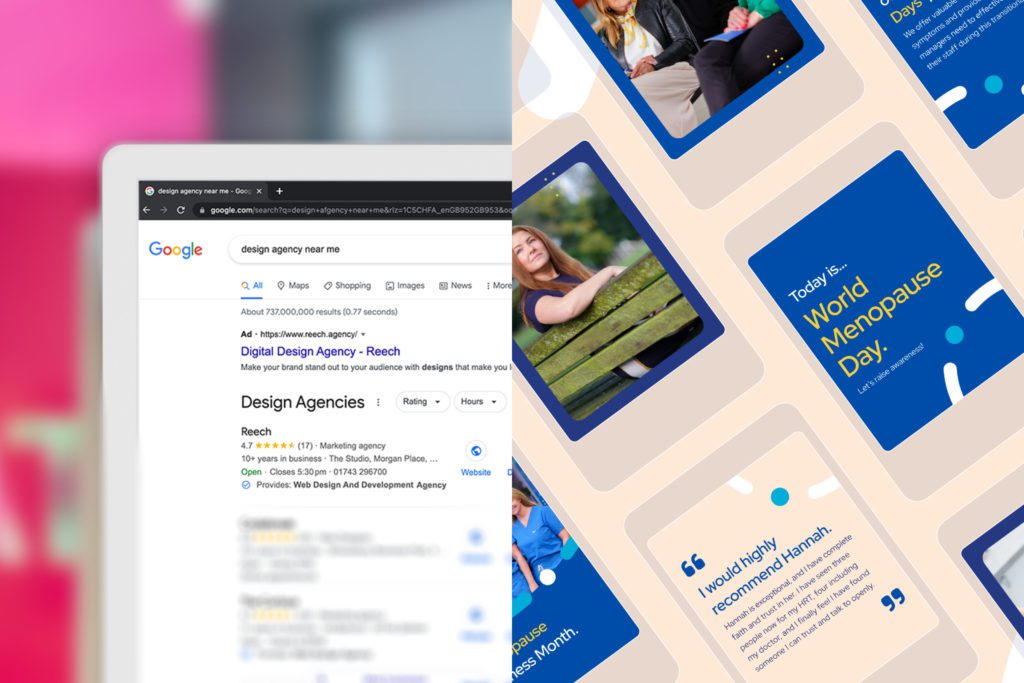Paid Search vs. Paid Social

In today’s digital jungle, paid search and paid social each bring something critical to the table. But let’s cut to the chase: if you’re relying on only one of these tactics (or – shock horror – not utilising either), you’re seriously underestimating the full potential of your marketing strategy.
New to the digital marketing game, and want to know how these tactics can elevate your business and drive real, measurable growth? Well, let’s get into it.
Paid Search: The Intent-Driven Giant
Paid Search, such as Google Ads, puts your business in front of users actively searching for products and services like yours. This makes it a goldmine for intent-driven leads. And it’s certainly a popular choice, with 65% of UK businesses already including it as part of their marketing strategy.
The Pros:
- Highly measurable – your ROI is right there in front of you: you spend, you track, you win
- Can reach millions of individuals who’re specifically seeking items or support directly relevant to your product or service
- Increased traffic and therefore greater quality leads
- Places you amongst your competitors.
The Cons:
- Cutthroat competition
- Constant optimisation is required to maintain its edge
- Tricky to target your audience by demographic
- Challenging to find and nurture individuals early in the customer journey.
But, if your ad copy and landing pages don’t highlight your mission and services, spending money on paid is futile. Drive traffic to high-converting websites that turn visitors into leads, or you’re just wasting money.
Paid search marketing is usually best placed when customers are ready to buy and are actively searching for what you offer. Think of it as your go-to for capturing demand.
In the real world
Say you’re a retailer selling golf clubs and want to explore how paid search could amplify sales. When someone searches for ‘best golf clubs’ or ‘buy golf clubs online’, paid search ads will target those high-intent users who are already actively looking to make a purchase. The paid advert will be prominently positioned on the search engine, ensuring to capture the attention of those ready-to-buy consumers and direct them straight to your product page.
For B2B organisations, it’s just as effective. Take a software company, for example – when a company searches for ‘best project management software’ or ‘project management tools for teams’, paid search allows you to target these intentional users who are actively researching solutions.
Paid Social: The Awareness-Boosting Beast
Paid Social is a completely different animal as it allows you to target users based on their interests, demographics, and behaviours.
These ads can be purchased on a variety of platforms – including Meta (Facebook and Instagram), YouTube, LinkedIn, Pinterest, TikTok, and X. With people spending over 1.5 hours on social media every day on average, it’s a great way to get in front of the people that matter the most to your business in all of the places they’re regularly hanging out.
The real beauty of it? Being able to personalise the adverts based on user data. In fact, three quarters (74%) of UK consumers admitted to favouring these types of ads that are tailored to their interests and needs, helping to solve a problem or offer a high-quality product or service.
The Pros:
- Able to reach a broader, untapped audience that’s both relevant and personalised
- Builds brand awareness
- Capitalises on user information
- Available in a variety of formats: video, static image, animation, carousel, etc.
- Taps into the impulsivity of consumers
- Connects with your audience at all stages of the marketing funnel
- Typically, more cost-effective than paid search.
The Cons:
- Risk of alienating audience due to intrusive adverts (getting tone and tempo right is KEY)
- Social media is constantly changing, so need to be agile to pivot with the latest trends
- Long-term ROI is harder to establish
- Unable to reach those who don’t have some previous interest in your product or service.
Paid social marketing is best for creating brand awareness, generating interest in new products, or re-engaging past customers. It’s a fantastic tool for building relationships, not just transactions.
In the real world
Using our same example as before, paid social can help you target golf enthusiasts, people who follow golf-related content, or users in specific age groups or locations. You’re no longer just targeting intent but also creating interest and sparking engagement with people who may not have considered buying yet but are intrigued by your product.
Paid social helps to target decision-makers, such as HR managers, directors, or team leaders, through platforms such as Facebook or LinkedIn. By promoting blog posts, case studies or webinars about improving team efficiencies or streamlining workflows, you can provide added value and showcase your expertise. Even if these users aren’t searching for a tool yet, paid social can spark awareness, engage them with your content, and build long-lasting relationships.
The Dynamic Duo
The real recipe for success? A mix of the two. Use paid social to attract attention and build awareness – as your audience engages with your brand, they’ll start searching for you. Then, use paid search to capture that intent when they’re ready to convert. When combined, these two strategies don’t just coexist, they perfectly complement and amplify each other.
If you’re ready to take your marketing to the next level, why choose one when you can have both? Reach out today and let’s make your digital marketing work harder for you.

